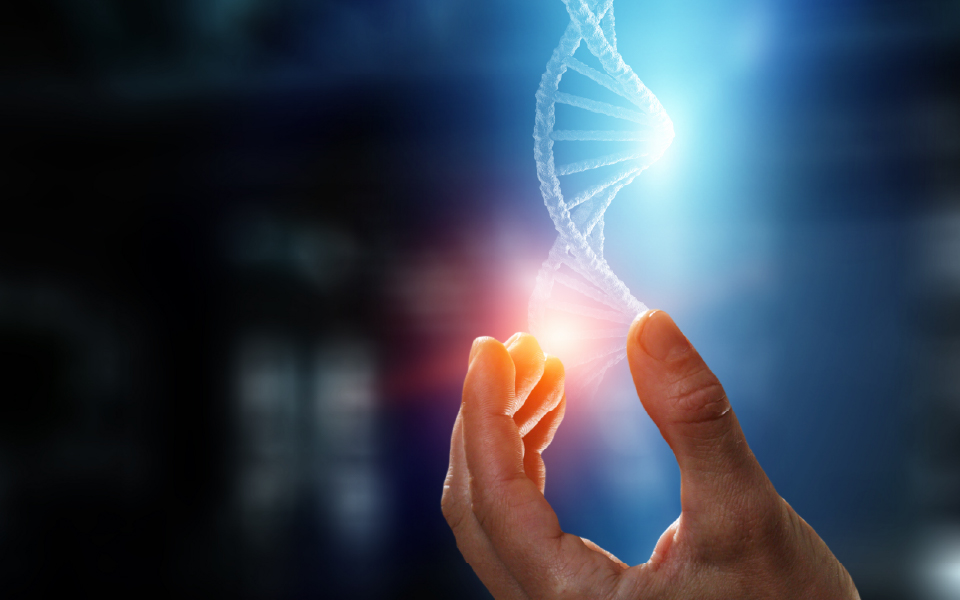Biotechnology-derived pharmaceuticals (biopharmaceuticals) cover a broad variety of active substances, including proteins and peptides, their derivatives, and products composed by proteins and peptides, that could be developed from cell cultures or using recombinant DNA technology.
This article presents the characteristics of biopharmaceuticals compared to conventional chemically‑synthesized pharmaceuticals (small molecules) and describes certain specifications to be considered for the design and conduct of nonclinical studies for biopharmaceuticals.
Table 1, Characteristics of Biopharmaceuticals vs Small Molecules
Biopharmaceuticals have unique characteristics that are different from small molecules, as noted in Table 1 below.
| Characteristic | Biopharmaceuticals | Small Molecules |
| Molecule size/structure | Large/complex | Small/uniform |
| Manufacturing | From natural sources (human, animal, plant, microorganisms) by biotechnology methods | Chemically synthesized |
| Product stability | Very sensitive to environmental factors | Generally, less sensitive to environmental factors |
| Target selectivity/specificity | High | Lower |
| Immunogenicity potential | High | Lower |
| Metabolism | Catabolized/degraded | Metabolized |
| Route of administration | Parenteral | Parenteral and others |
| High dose selection for nonclinical testing | Guided by saturation of pharmacodynamic response and dose multiple to clinical dose | Guided by Maximum Tolerated Dose (MTD) |
Nonclinical Evaluation
The nonclinical evaluation directly depends on the type of compound. Due to the unique characteristics of biopharmaceuticals, many of the principles of conventional nonclinical evaluation require modification to achieve scientifically valid safety and efficacy outcomes for biopharmaceuticals. The properties of biopharmaceuticals that relate specifically to variation in nonclinical requirements include high selectivity and specificity as well as generally well characterized pharmacokinetic (PK) properties for certain classes. The specific applications of these factors to nonclinical requirements are described below.
Table 2, Biopharmaceuticals Nonclinical Program vs Small Molecules
| Study Type | Timing Relative to Clinical Studies | Biopharmaceuticals | Small Molecules |
| Pharmacodynamics | Before Phase 1 | Yes | Yes |
| Safety pharmacology | Before Phase 1 | Product specifica | Yes |
| In vitro metabolic profile; plasma protein binding | Before Phase 1 | No | Yes |
| Systemic exposure | Before Phase 1 | Yes | Yes |
| In vivo ADMEb; in vitro drug interactions | Generally, before Phase 3 | No | Yes |
| General toxicology | Before Phase 1, Phase 2, and Phase 3 | Yes | Yes |
| Genotoxicity | In vitro mutagenic and clastogenic studies, before Phase 1; complete battery, before Phase 2 | Noc | Yes |
| Carcinogenicity | For marketing approval | Product specificd | Product specifice |
| Reproductive and developmental toxicity | Completed before Phase 3 or marketing approval | Product specificf | Generally, Yes |
| Immunotoxicity | Completed before Phase 3 | Yes | Yes |
| Local tolerance | Before Phase 1 | Yes | Yesg |
ADME = Administration Distribution Metabolism Excretion.
- Evaluation as a part of toxicology/pharmacodynamic studies is often sufficient in the case of biopharmaceuticals with high target specificity. Consider a more extensive evaluation in case of a novel therapeutic class and/or no high target specificity.
- Comparative in vivo human and animal metabolism data.
- Protein or peptide administration in large quantities may generate uninterpretable results, and direct interaction with DNA or other chromosomal material is not expected with biopharmaceuticals. Studies in available and relevant systems only needed in case of cause of concern.
- Dependent on clinical dosing duration, patient population, product biological activity (e.g., growth factors or immunosuppressive agents), or cause of concern (weight of evidence).
- Chronic drugs or cause of concern.
- Dependent on the product, clinical indication, and intended patient population.
- In case of parenteral administration.
Seven Considerations for Design and Conduct of Nonclinical Studies for Biopharmaceuticals
-
Consideration 1: Animal Species Selection
Due to the high selectivity and species specificity of biopharmaceuticals, it is important to identify and select relevant animal species for efficacy and safety evaluation. In vitro studies in mammalian cell lines that predict in vivo activity and assess species sensitivity (including human) can be used to identify and select relevant animal species. Additionally, tissue cross‑reactivity (TCR) studies can guide the selection by comparing tissue binding profiles between human tissues and animal tissues where target binding is expected.
Homologous molecules or transgenic models can be used when no relevant species can be identified (no interaction with the orthologous target in any species).
-
Consideration 2: Pharmacodynamics (PD)
Biopharmaceuticals have limited intracellular access considering their high molecular weight and structural complexity, and therefore, their targets are extracellular.
-
Consideration 3: Pharmacokinetics/Toxicokinetics
Typically, biopharmaceuticals have limited distribution, with limited intracellular access, and a long half-life. Classical biotransformation studies are not needed since the metabolic pathways of biopharmaceuticals are generally understood (expected to degrade to small peptides and individual amino acids).
-
Consideration 4: General Toxicity
The toxicity of most biopharmaceuticals relates to their targeted mechanism of action and therefore, adverse effects are apparent as exaggerated pharmacology.
Usually, toxicology testing requires two different species. However, one species is acceptable for biopharmaceuticals if pharmacologically active only in one species.
High dose selection for toxicology studies can be determined using PK/PD approaches that identify a dose which provides:
-
- the maximum intended pharmacological effect in the nonclinical species; and
- an approximately 10-fold exposure over the maximum exposure to be achieved in the clinic.
The higher of these two would be the high dose, unless the use of a lower dose is justified (e.g., maximum feasible dose [MFD]). In case in vivo/ex vivo PD endpoints are not available, PK data and available in vitro binding and/or pharmacology data can be used to select the high dose.
The duration of repeat-dose studies for biopharmaceuticals is based, as for small molecules, on the intended clinical treatment duration and disease indication. Duration usually ranges between 1 to 3 months for biopharmaceuticals, and the recommended duration for short-term and chronic use/indications is included in Table 3, as follows:
| Intended Clinical Use | Duration |
| Short-term use (< 7 days) and acute life-threatening diseases | Up to 2 weeks |
| Chronic indications | Generally, 6 months |
| Chronic use | Scientifically justified |
Source: ICH S6 Preclinical Safety Evaluation of Biotechnology derived Pharmaceuticals.
Because of their high selectivity and specificity, biopharmaceuticals have less potential for off‑target toxicity. Since TCR studies can supplement knowledge of target distribution and potential unexpected binding, it is recommended to perform a TCR study with a panel of human tissues to support the initial clinical dosing; knowing that tissue binding per se is not indicative of in vivo biological activity, and that binding to areas not typically accessible in vivo to biopharmaceuticals (e.g., cytoplasm) is normally not relevant.
-
Consideration 5: Carcinogenicity
A weight of evidence approach can be followed (review of relevant data, additional endpoints in toxicology studies, understanding target biology related to potential carcinogenic concern) and if there is no evidence of cause of concern, no carcinogenic studies are needed.
-
Consideration 6: Reproductive and Developmental Toxicity
The species-specific profile of embryo-fetal exposure to biopharmaceuticals should be considered since high molecular weight proteins do not cross the placenta by simple diffusion (e.g., the neonatal Fc receptor [FcRn], a transport mechanism, varies across species).
-
Consideration 7: Immunogenicity
There are potential risks of allergic reactions and immunotoxicity considering the origin and nature of biopharmaceuticals; therefore, antidrug antibody (ADA) responses and the impact on PD activity, exposure, or safety due to immune-mediated reactions should be characterized (typically as part of toxicology studies).
Conclusions
The aforementioned considerations and specifications are important for the optimal drug development of biopharmaceuticals to best support the clinical evaluation and marketing authorization. Overall, nonclinical development of biopharmaceuticals requires a scientific and rational approach focusing on the unique characteristics of the product and an understanding of the current regulatory environment.
References
- American College of Toxicology. eLearning Seminar Basic Topics in Toxicology American College of Toxicology. November 2022.
- Food and Drug Administration. Webinar Nonclinical Safety Assessment for Small Molecules and Biologic Drug Development. May 2020.
- ICH Harmonised Tripartite Guideline M3(R2) Guidance on Nonclinical Safety Studies for the Conduct of Human Clinical Trials and Marketing Authorization for Pharmaceuticals. June 2009.
- ICH Harmonised Tripartite Guideline Q5C Quality of Biotechnological Products: Stability Testing of Biotechnological/Biological Products. November 1995.
- ICH Harmonised Tripartite Guideline S1A Guideline on the Need for Carcinogenicity Studies of Pharmaceuticals. November 1995.
- ICH Harmonised Tripartite Guideline S6(R1) Preclinical Safety Evaluation of Biotechnology‑derived Pharmaceuticals.
- ICH Harmonised Tripartite Guideline S7A Safety Pharmacology Studies for Human Pharmaceuticals. November 2000.
This article was authored by :
- Pinar Merino-Pascual, Senior Medical Writer I, Regulatory and Medical Writing
- Margaret Studzinska, Senior Director, Regulatory and Medical Writing
- Wai-Fung Chau, Senior Medical Writer, Regulatory and Medical Writing





